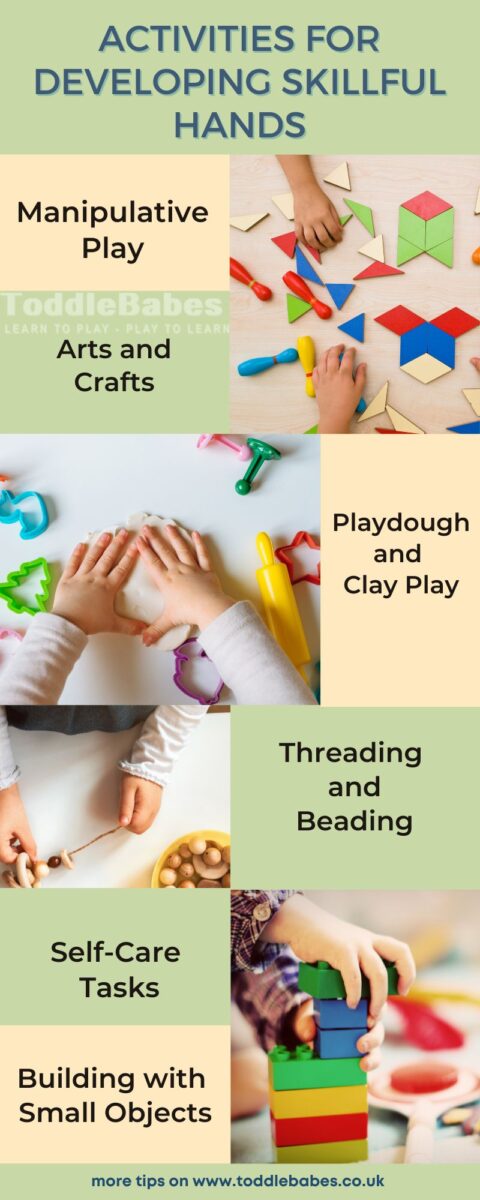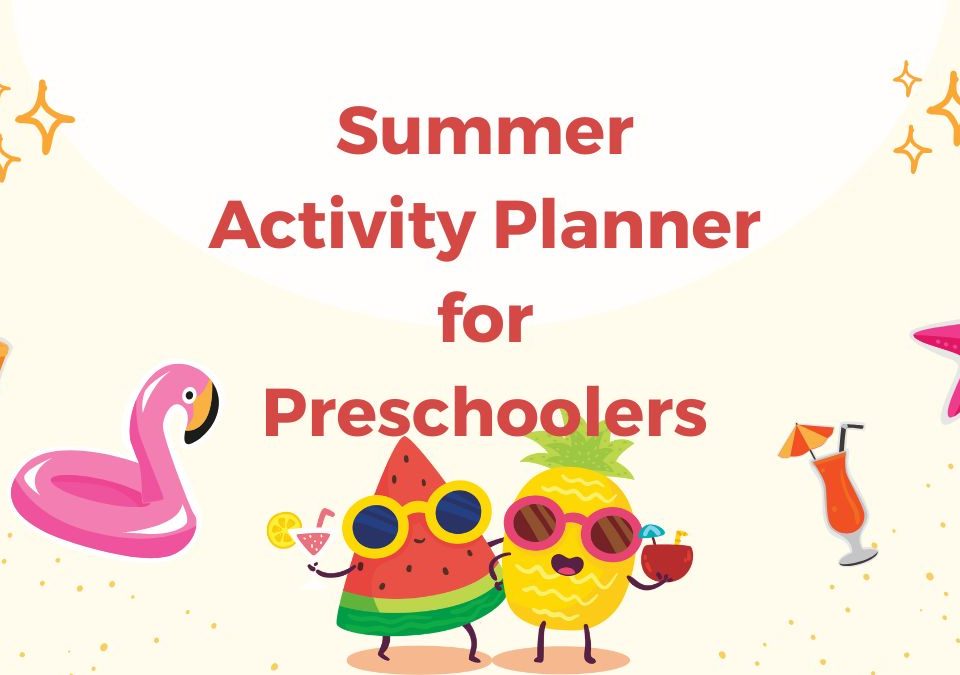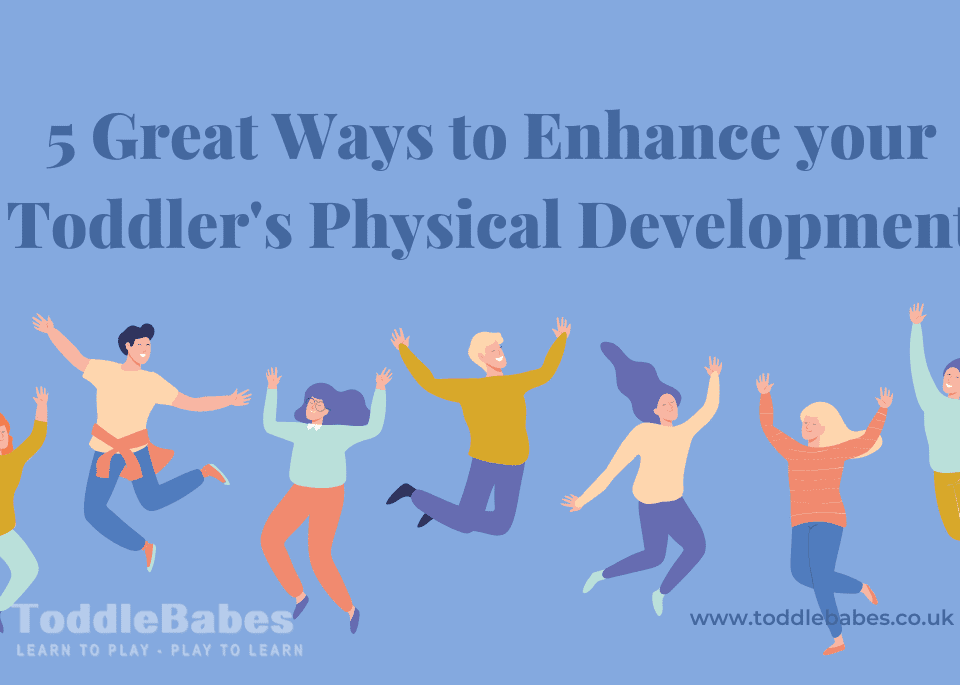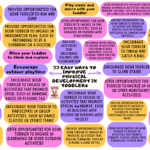
33 Easy Ways to Improve Physical Development in Toddlers

5 Brilliant Ways to Enhance Gross Motor Skills
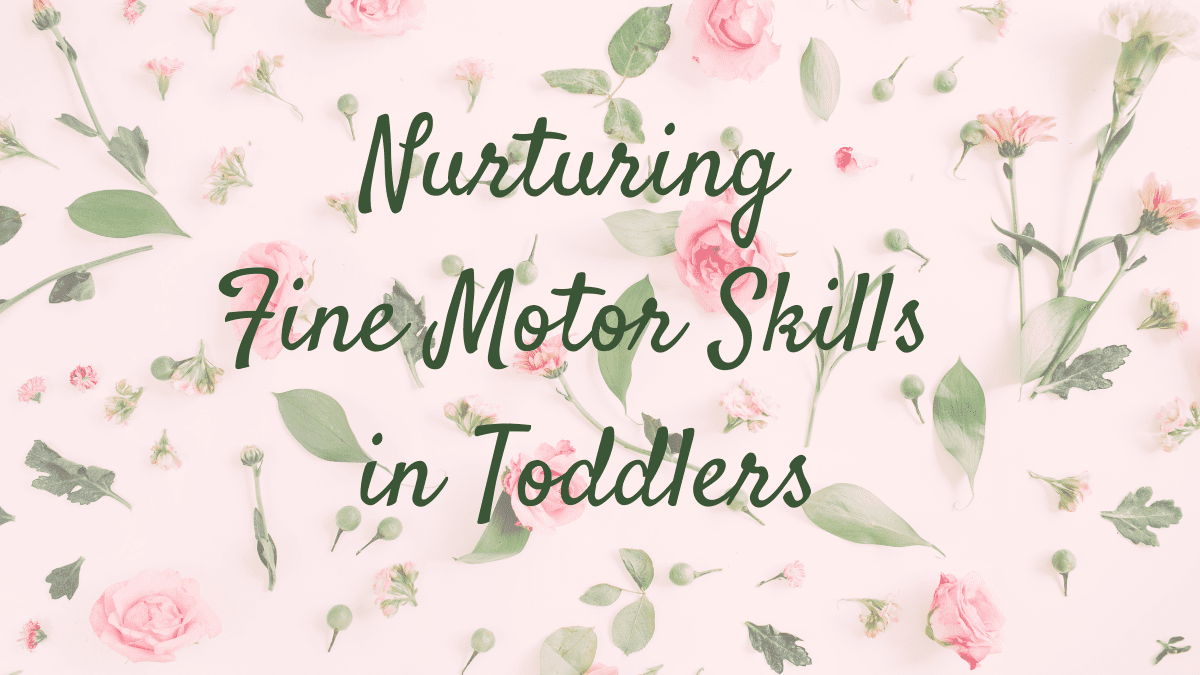
Table of Contents
Engaging Activities for Developing Skillful Hands
Fine motor skills are crucial for the development of small muscle groups in the hands and fingers. These skills play a significant role in tasks like writing, drawing, and self-care activities. By engaging in age-appropriate activities, parents and caregivers can support the development of fine motor skills in toddlers. In this article, we will explore exciting and educational activities that promote coordination, hand-eye control, and dexterity.
Fine motor skills are essential for the development of small muscle groups in the hands and fingers, enabling toddlers to perform tasks that require precision and control. These skills play a significant role in various activities, such as writing, drawing, using utensils, buttoning clothes, and performing self-care tasks like tying shoelaces or brushing teeth. By engaging in age-appropriate activities, parents and caregivers can actively support the development of fine motor skills in toddlers, setting a strong foundation for their future academic and everyday life.
- Manipulative Play: Engaging in manipulative play activities helps toddlers develop their fine motor skills while having fun. Building with blocks, playing with interlocking toys, sorting objects, and using puzzles all require the use of small muscles and promote hand-eye coordination. These activities encourage toddlers to grasp, stack, sort, and manipulate objects, strengthening their hand muscles and improving their manual dexterity.
- Arts and Crafts: Arts and crafts activities provide a wonderful opportunity for toddlers to refine their fine motor skills. Drawing with crayons, colouring, cutting with safety scissors, and using stickers involve precise hand movements and finger control. As children engage in these activities, they practice holding and controlling writing tools, developing their grip strength and pencil control. These creative endeavours also encourage imagination, self-expression, and cognitive development.
- Playdough and Clay Play: Working with playdough or clay is an excellent activity for fine motor skill development. Rolling, squeezing, pinching, and shaping these malleable materials require intricate finger movements and hand strength. As toddlers mould and manipulate the dough, they refine their hand-eye coordination, finger control, and finger isolation. Additionally, the sensory experience of playdough or clay play enhances tactile exploration and sensory integration.
- Threading and Beading: Threading beads onto strings or laces promotes hand-eye coordination, finger dexterity, and bilateral coordination. Toddlers can practice threading large beads or pasta onto shoelaces or pipe cleaners. This activity challenges their fine motor skills as they manipulate and thread objects through small openings. Threading and beading activities enhance their pincer grasp, finger strength, and spatial awareness.
- Self-Care Tasks: Encouraging toddlers to participate in self-care tasks supports the development of their fine motor skills. Activities such as buttoning and unbuttoning clothes, zipping and unzipping jackets, brushing teeth, and using utensils for self-feeding require precise finger movements and coordination. By gradually allowing children to perform these tasks independently, caregivers foster their self-confidence and fine motor abilities.
- Building with Small Objects: Engaging in activities that involve building with small objects, such as blocks, Legos, or small construction toys, challenges toddlers’ fine motor skills. Manipulating and connecting small pieces requires finger control, coordination, and spatial awareness. Building activities help toddlers refine their pincer grasp, hand strength, and hand-eye coordination as they construct and manipulate structures.
It is important to ensure that activities are age-appropriate and safe for toddlers. You should closely supervise and provide materials suitable for their developmental stage, avoiding small parts that may pose a choking hazard.
Supporting the development of fine motor skills in toddlers is crucial for their overall development and future success in tasks that require precision and control. Engaging in a variety of age-appropriate activities, such as manipulative play, arts and crafts, play dough and clay play, threading and beading, self-care tasks, and building with small objects, promotes coordination, hand-eye control, and dexterity. By providing opportunities for toddlers to practice and refine their fine motor skills, parents and caregivers play an active role in supporting their child’s growth and preparing them for future challenges.
Puzzles and Building Blocks
Puzzles: Introduce age-appropriate puzzles with larger pieces that require hand-eye coordination and finger manipulation. Start with simple wooden or jigsaw puzzles and gradually increase the complexity. Puzzles improve problem-solving abilities, spatial awareness, and fine motor control.
Puzzles are a fantastic activity for toddlers to develop their fine motor skills while engaging their problem-solving abilities and spatial awareness. Introducing age-appropriate puzzles with larger pieces is a great way to promote hand-eye coordination, finger manipulation, and cognitive development. Starting with simple wooden or jigsaw puzzles and gradually increasing the complexity allows toddlers to build their skills and confidence over time.
- Hand-Eye Coordination: Completing puzzles requires toddlers to manipulate puzzle pieces with their hands while visually coordinating their movements. As they reach for and grasp puzzle pieces, they develop hand-eye coordination, which is essential for tasks that require precise movements and coordination between the hands and eyes. By aligning the pieces and fitting them into the correct spaces, toddlers refine their hand-eye control and gain a better understanding of spatial relationships.
- Finger Manipulation: Puzzles provide an opportunity for toddlers to practice finger manipulation and fine motor control. They need to pick up and manipulate puzzle pieces using a pincer grasp, a fine motor skill where the thumb and index finger work together to hold and manipulate small objects. As they manipulate the pieces, toddlers strengthen their finger muscles and develop dexterity, which is crucial for tasks like writing, drawing, and using utensils.
- Problem-Solving Skills: Completing a puzzle involves problem-solving skills as toddlers analyze the shapes, colours, and patterns on the pieces to find their correct positions. They learn to observe details, make comparisons, and use trial and error to fit the pieces together. These problem-solving experiences help toddlers develop critical thinking skills, patience, and persistence as they work towards completing the puzzle.
- Spatial Awareness: Puzzles offer opportunities for toddlers to develop spatial awareness, and the ability to understand and perceive the relationships between objects in space. As they manipulate and rotate puzzle pieces, toddlers learn about shapes, sizes, and orientations. They develop an understanding of how different pieces fit together to form a complete picture. Spatial awareness is an important skill that supports various aspects of cognitive development, including math, geometry, and visual perception.
- Cognitive Development: Engaging in puzzle activities stimulates cognitive development in toddlers. They exercise their memory skills as they remember the shapes and positions of puzzle pieces. Puzzles also promote pattern recognition and visual discrimination, as toddlers identify similarities and differences among the pieces. Additionally, completing puzzles provides a sense of accomplishment, boosting confidence and self-esteem.
As toddlers progress in their puzzle-solving abilities, caregivers can gradually introduce more complex puzzles with smaller and more intricate pieces. This progression challenges their fine motor skills, problem-solving abilities, and cognitive development further. You should offer guidance and support when needed, encouraging toddlers to approach the puzzles independently while providing assistance as necessary.
Puzzles are an excellent activity for toddlers to develop their fine motor skills, problem-solving abilities, spatial awareness, and cognitive development. By introducing age-appropriate puzzles with larger pieces and gradually increasing the complexity, caregivers provide opportunities for toddlers to refine their hand-eye coordination, finger manipulation, and cognitive skills. Puzzle activities offer a fun and engaging way for toddlers to learn and grow, fostering their development in multiple areas while nurturing a sense of accomplishment and confidence.
Building Blocks: Provide building blocks of various shapes and sizes. Encourage your child to stack and arrange them, enhancing their hand-eye coordination, precision, and finger strength. These activities also foster creativity and spatial reasoning.
Building blocks are a versatile and timeless toy that offers numerous benefits for toddlers’ development. By providing building blocks of various shapes and sizes, caregivers can encourage their children to engage in activities that enhance hand-eye coordination, precision, finger strength, creativity, and spatial reasoning. Building with blocks allows toddlers to explore their imagination, develop problem-solving skills, and improve their fine motor abilities.
- Hand-Eye Coordination: Building with blocks requires toddlers to use their hands and eyes together in a coordinated manner. As they reach for and grasp blocks, they learn to align and stack them, improving their hand-eye coordination. Precise movements are needed to place blocks accurately, promoting the development of this essential skill that contributes to activities such as writing, drawing, and sports.
- Precision and Finger Strength: Manipulating and arranging blocks necessitates precise finger movements, which help develop fine motor skills. Toddlers must use their fingers to grasp and control the blocks, fostering the development of dexterity and finger strength. The small muscles in their hands and fingers are engaged as they pick up, rotate, and fit blocks together, promoting their overall hand strength and control.
- Spatial Reasoning: Building with blocks provides an excellent opportunity for toddlers to enhance their spatial reasoning abilities. They learn about shapes, sizes, and spatial relationships as they explore different ways to stack and arrange the blocks. They develop an understanding of balance, stability, and symmetry as they experiment with building structures. These experiences help toddlers develop spatial awareness, an essential skill that supports math, geometry, and problem-solving.
- Creativity and Imagination: Building blocks stimulate creativity and imagination in toddlers. They can create various structures, from simple towers to more elaborate designs, using their own ideas and concepts. Blocks allow children to transform their imagination into tangible creations, boosting their self-expression and fostering their creative thinking skills.
- Problem-Solving Skills: Building with blocks presents challenges that toddlers must solve. They encounter problems such as stability, balance, and finding the right blocks to fit together. They learn through trial and error, experimenting with different arrangements until they achieve the desired outcome. These problem-solving experiences enhance critical thinking skills, persistence, and resilience.
- Social and Language Development: Building with blocks can also be a social activity, promoting interaction and language development. Toddlers can engage in cooperative play, sharing blocks, and working together to build structures. They learn to communicate their ideas, negotiate roles, and solve problems collaboratively. These interactions foster social skills, turn-taking, and communication, supporting overall social and emotional development.
You can enhance the block-building experience by providing a variety of blocks, such as wooden blocks, foam blocks, or interlocking blocks. They can also introduce additional elements like ramps, bridges, or figurines to encourage open-ended and imaginative play. It is important to create a safe environment, ensuring that the blocks are age-appropriate and free from choking hazards.
Building blocks offer a wide range of benefits for toddlers’ development. Engaging in activities that involve stacking, arranging, and creating with blocks promotes hand-eye coordination, precision, finger strength, creativity, spatial reasoning, problem-solving skills, and social development. Caregivers can encourage their children’s exploration and imagination by providing a variety of blocks and supporting their play. Building with blocks provides a fun and educational experience that nurtures essential skills and fosters a lifelong love of learning and creativity.
Playdough and Clay
Playdough Exploration: Allow your child to play with non-toxic playdough, squishing, squeezing, rolling, and shaping it into different forms. This activity strengthens hand muscles, improves finger dexterity, and enhances sensory exploration. Introduce tools like plastic cookie cutters or rolling pins to add variety.
Get our flop proof, no-cook playdough recipe here Perfect Play Dough
Playdough exploration is a fantastic activity for toddlers that provides them with a wide range of developmental benefits. By allowing children to play with non-toxic playdough and engage in activities such as squishing, squeezing, rolling, and shaping it into different forms, caregivers can support the development of hand muscles, improve finger dexterity, and enhance sensory exploration.
- Hand Strength and Grip: Playing with playdough requires toddlers to use their hands and fingers to manipulate and mould the dough. As they squeeze, knead, and flatten the playdough, they strengthen the muscles in their hands. This strengthens their grip and improves their hand strength, which is crucial for activities that require fine motor control, such as writing, drawing, and using utensils.
- Finger Dexterity: Manipulating playdough helps toddlers develop their finger dexterity. They can pinch the dough between their fingers, roll it into small balls or long ropes, and use their fingertips to create intricate details. These activities challenge their fine motor skills and promote the coordination and control of individual fingers, improving their ability to perform delicate tasks.
- Sensory Exploration: Playdough provides a rich sensory experience for toddlers. Its soft and pliable texture engages their sense of touch, allowing them to explore different sensations. They can experience the coolness of the dough, feel its smoothness or create different textures using tools or their fingers. Sensory exploration through playdough promotes sensory integration and helps children develop their ability to process and respond to sensory information.
- Creativity and Imagination: Playdough offers endless opportunities for creativity and imaginative play. Toddlers can shape the dough into various forms, such as animals, objects, or abstract creations, allowing them to express their imagination. They can experiment with different colours, mix them to create new shades, and add additional elements like sequins or small objects to enhance their creations. Playdough encourages open-ended play, fostering creative thinking and self-expression.
- Tool Usage and Problem-Solving: Introducing tools like plastic cookie cutters, rolling pins, or plastic knives to playdough play adds an element of variety and challenges toddlers’ problem-solving skills. They can explore how different tools create various shapes, patterns, or textures in the dough. Using the tools also improves their hand-eye coordination and spatial awareness as they learn to manipulate and control the tools to achieve the desired outcomes.
You should ensure that the playdough used is non-toxic and safe for children. Homemade playdough or store-bought options specifically designed for young children are excellent choices. It is also essential to create a designated play area and supervise children during play to prevent the ingestion of the dough.
Playdough exploration is a valuable activity that offers numerous benefits for toddlers’ development. Through squishing, squeezing, rolling, and shaping playdough, children strengthen their hand muscles, improve finger dexterity, engage in sensory exploration, and enhance their creativity and problem-solving skills. Introducing tools adds further opportunities for skill development and variety. By incorporating playdough play into their routines, caregivers provide an engaging and educational experience that supports multiple aspects of a child’s growth and learning.
Clay Modelling: Offer your child clay to mould and sculpt. Clay provides a tactile experience that helps refine hand control, finger strength, and coordination. Encourage them to create simple shapes or objects, fostering creativity and fine motor skills.
Clay modelling is a wonderful activity that allows toddlers to engage their senses, refine their hand control, develop finger strength, and enhance their coordination. By offering clay for moulding and sculpting, caregivers can provide a tactile experience that supports the development of fine motor skills, creativity, and imagination.
- Tactile Sensory Experience: Clay offers a unique tactile experience for toddlers. Its malleable and pliable nature allows children to explore different textures, temperatures, and sensations. As they manipulate the clay with their hands, they engage their sense of touch, which plays a crucial role in sensory integration and cognitive development. The sensory experience of clay modelling stimulates neural connections and enhances the child’s overall sensory processing abilities.
- Hand Control and Finger Strength: Manipulating clay requires precise hand control and finger movements. Toddlers use their hands to squeeze, roll, pinch, and shape the clay. These activities strengthen the muscles in their hands and fingers, promoting the development of fine motor skills. By refining their hand control and finger strength through clay modelling, children improve their ability to perform intricate tasks that involve precise movements, such as writing, drawing, and using utensils.
- Coordination and Spatial Awareness: Clay modelling helps toddlers develop coordination and spatial awareness. As they mould and sculpt the clay, they engage in hand-eye coordination, aligning their hand movements with their visual perception. They learn about spatial relationships, proportions, and dimensions as they shape the clay into different forms. These experiences contribute to the development of spatial reasoning skills, which are essential for various cognitive tasks, including math, geometry, and problem-solving.
- Creativity and Imagination: Clay modelling provides a platform for toddlers to express their creativity and imagination. They can use the clay to create simple shapes, objects, or even imaginary creatures. The open-ended nature of clay allows children to explore their own ideas and bring them to life through their sculpting. This process encourages divergent thinking, problem-solving, and self-expression, fostering the development of their creative and imaginative abilities.
- Fine Motor Skills: Clay modelling is an excellent activity for enhancing fine motor skills. Toddlers practice various hand movements, such as rolling, pressing, pinching, and shaping, which require precise finger control. These actions promote finger isolation, bilateral coordination, and hand strength. Through clay modelling, children develop their ability to manipulate small objects, refine their manual dexterity, and improve their overall fine motor control.
Encourage your child’s clay modelling by providing different colours of clay, tools like plastic knives or sculpting tools, and a designated workspace. Offer simple prompts or suggestions to inspire their creations, but also allow them the freedom to explore and experiment on their own. Display their finished pieces to celebrate their creativity and boost their self-esteem.
It is important to note that natural clay or non-toxic modelling clay should be used, to ensure the safety of the child. Supervision is recommended to prevent ingestion or misuse of the clay.
Clay modelling is a valuable activity that offers numerous benefits for toddlers’ development. Through tactile exploration, hand control, finger strength, coordination, creativity, and fine motor skill development, clay modelling provides a holistic learning experience. By incorporating clay modelling into their routines, caregivers support their child’s sensory integration, cognitive development, and self-expression, while also fostering their fine motor skills and promoting their artistic abilities.
Scribbling and Colouring
Chunky Crayons: Provide chunky or triangular crayons designed for small hands. These are easier to grip and control. Offer large sheets of paper or colouring books and let your child freely scribble and explore. This activity helps develop hand control, finger grip, and fine motor precision.
Chunky crayons are a fantastic tool for toddlers to engage in colouring and drawing activities. These specially designed crayons are easier to grip and control, making them ideal for small hands. By providing chunky or triangular crayons, caregivers can support the development of hand control, finger grip, and fine motor precision in young children.
- Easier Grip and Control: Chunky crayons are specifically designed with a larger size and a comfortable grip to fit young children’s hands. Their ergonomic shape allows toddlers to hold them with a more natural and relaxed grasp. This design promotes proper finger positioning and reduces strain, making it easier for toddlers to control the crayons while colouring or drawing. The larger size also prevents the crayons from slipping out of their hands, giving them more confidence and independence in their artistic endeavours.
- Hand Control and Finger Grip: Coloring and drawing with chunky crayons require toddlers to use their hands and fingers to control the crayons’ movement on paper. By holding and manipulating the crayons, children develop their hand control and coordination. They learn to apply the right amount of pressure to create different lines and shapes, improving their fine motor skills and precision. The chunky size of the crayons allows for a more controlled grip, enabling toddlers to focus on their hand movements and develop greater control over their colouring and drawing activities.
- Fine Motor Precision: Coloring with chunky crayons encourages toddlers to refine their fine motor skills and hand-eye coordination. As they try to colour within lines or fill in small details, they develop precision in their hand movements. The act of controlling the crayon’s tip to create specific shapes or patterns helps improve their spatial awareness and dexterity. These skills are essential for tasks that require fine motor control, such as writing, drawing, and self-care activities.
- Creativity and Self-Expression: Offering large sheets of paper or colouring books along with chunky crayons allows toddlers to freely explore their creativity and self-expression. They can experiment with different colours, create their own drawings, or colour in pre-drawn images. This activity fosters imagination and encourages children to communicate visually. It provides an outlet for them to express their ideas, emotions, and observations through art, promoting cognitive development and boosting self-confidence.
- Pre-Writing Skills: Engaging in colouring and drawing activities with chunky crayons lays the foundation for pre-writing skills. By using the crayons, toddlers practice the basic movements required for writing, such as holding and controlling a writing instrument. They develop hand strength, finger dexterity, and the ability to follow lines or trace shapes. These pre-writing skills are crucial for later stages of writing development.
When introducing chunky crayons to toddlers, it is essential to create a safe and conducive environment for art activities. Provide a variety of colours and encourage free exploration. Display and appreciate their artwork to foster a sense of accomplishment and pride.
Chunky crayons are an excellent tool for toddlers to develop hand control, finger grip, and fine motor precision. By offering these specially designed crayons, caregivers provide young children with an accessible and enjoyable way to engage in colouring and drawing activities. Through the use of chunky crayons, toddlers enhance their grip, refine their fine motor skills, and express their creativity. This activity promotes their cognitive development, and artistic abilities, and prepares them for future writing skills.
Colouring Activities: Introduce colouring activities with simple shapes or pictures. Encourage your child to stay within the lines, promoting hand-eye coordination and focus. Use colouring books with larger illustrations and bold outlines to provide a sense of accomplishment and boost confidence.
Colouring activities are a popular and beneficial pastime for toddlers, offering a wide range of developmental advantages. By introducing colouring activities with simple shapes or pictures, caregivers can engage their child in an enjoyable and educational experience that promotes hand-eye coordination, focus, and confidence.
- Hand-Eye Coordination: Colouring requires toddlers to coordinate their hand movements with their visual perception. As they hold the crayon or coloured pencil and move it across the paper, they learn to align their hand movements with the lines and shapes they are colouring. This activity enhances hand-eye coordination, as children develop their ability to control their hand movements in a precise and controlled manner.
- Focus and Concentration: Colouring activities encourage toddlers to concentrate and focus on the task at hand. Staying within the lines of a picture or shape requires sustained attention and concentration. As children strive to colour accurately and neatly, they develop their ability to concentrate on a specific activity for an extended period. This practice enhances their focus and concentration skills, which are essential for academic and everyday tasks.
- Following Instructions: Colouring within the lines of a picture or shape teaches toddlers to follow instructions. You can provide simple directions, such as “Colour the circle blue” or “Colour the tree green,” guiding the child’s colouring choices. By following these instructions, children learn to comprehend and execute simple tasks, developing their listening skills and ability to follow directions.
- Sense of Accomplishment: Using colouring books with larger illustrations and bold outlines provides a sense of accomplishment for toddlers. The simplicity of the pictures and shapes allows children to complete colouring tasks more easily. As they fill in the larger areas with colours, they experience a sense of achievement, boosting their self-esteem and confidence. This positive reinforcement encourages them to continue engaging in colouring activities and reinforces their belief in their abilities.
- Creative Expression: Colouring activities offer an opportunity for toddlers to express their creativity and personal preferences. They can choose the colours they want to use, experiment with different colour combinations, and make artistic choices. This creative expression allows children to develop their individuality and personal style while enhancing their cognitive and emotional development.
When introducing colouring activities, it is important to provide age-appropriate materials, such as crayons or coloured pencils, and colouring books with suitable illustrations for toddlers. Ensure that the illustrations have larger areas to colour and bold outlines that are easier for young children to follow. Create a comfortable and quiet environment that allows for focused engagement in colouring. Encourage your child’s efforts, appreciate their work, and display their finished pieces to celebrate their achievements.
Colouring activities are a valuable tool for supporting toddlers’ development. Through colouring simple shapes or pictures, children enhance their hand-eye coordination, focus, concentration, and ability to follow instructions. Colouring also provides a sense of accomplishment and boosts confidence. It allows for creative expression and nurtures individuality. By incorporating colouring activities into their routines, caregivers provide an engaging and enriching experience that promotes various aspects of a child’s growth and learning.
Cutting and Tearing
Cutting Practice: Offer child-safe scissors and provide strips of paper for cutting practice. Start with thicker paper and progress to thinner materials. Supervise closely as your child learns to manipulate the scissors, improving hand strength and coordination. This activity also develops bilateral coordination.
Cutting practice is a valuable activity that promotes the development of fine motor skills, hand-eye coordination, and bilateral coordination in toddlers. By offering child-safe scissors and providing strips of paper for cutting, caregivers can create a supervised and engaging environment for children to refine their cutting skills and enhance their hand strength and coordination.
- Fine Motor Skills Development: Cutting with scissors requires the use of precise hand movements and finger control. As toddlers manipulate the scissors, they strengthen the muscles in their hands and fingers. The act of opening and closing the scissors helps develop fine motor skills, including finger dexterity and hand strength. Through cutting practice, children improve their ability to control their hand movements and perform precise actions, which are essential for tasks like writing, drawing, and self-care activities.
- Hand-Eye Coordination: Cutting practice promotes hand-eye coordination, as toddlers learn to guide the scissors along the lines of the paper. They must visually track the line while coordinating their hand movements to follow it accurately. This activity trains their eyes and hands to work together, enhancing their coordination and synchronization between their visual perception and motor skills. Improved hand-eye coordination supports various activities, such as reading, writing, and sports.
- Bilateral Coordination: Cutting practice also develops bilateral coordination, which is the ability to use both sides of the body together in a coordinated manner. Holding the paper with one hand while cutting with the other hand requires toddlers to coordinate the movements of both hands simultaneously. This activity helps improve their ability to use both hands independently and in a coordinated manner, laying the foundation for tasks that involve bilateral coordination, such as tying shoelaces or using utensils.
- Visual-Spatial Skills: Cutting practice aids in the development of visual-spatial skills, as toddlers learn to navigate lines and shapes while cutting. They must analyze the spatial relationships and proportions of the paper to make accurate cuts. By engaging in cutting practice, children enhance their ability to visually perceive and manipulate objects in space, which is important for activities like drawing, puzzles, and construction play.
- Patience and Focus: Cutting practice requires patience and focus from toddlers. They must maintain their attention on the task and follow the lines carefully to achieve the desired cuts. Engaging in this activity helps children develop their ability to concentrate, sustain attention, and persist through a task. These skills are transferable to other areas of their lives, supporting their academic performance and everyday activities.
When introducing cutting practice, it is crucial to provide child-safe scissors specifically designed for young children. Start with thicker paper or cardstock to provide stability and progress to thinner materials as your child’s skills improve. Supervise closely during the initial stages to ensure safety and offer guidance as needed. Encourage your child’s efforts, celebrate their progress, and display their cutouts as a tangible representation of their achievements.
Cutting practice is a valuable activity for toddlers to develop fine motor skills, hand-eye coordination, bilateral coordination, visual-spatial skills, patience, and focus. By offering child-safe scissors and strips of paper for cutting, caregivers create a supervised and engaging environment for children to refine their cutting skills. This activity strengthens hand muscles, improves finger control, and enhances coordination between the hands and eyes. As children gain proficiency in cutting, they develop skills that support various tasks and activities in their daily lives.
Tearing Paper: Provide old magazines or newspapers and encourage your child to tear the pages into smaller pieces. Tearing paper enhances finger strength and coordination, preparing them for future activities like crafts and collages. Tearing paper is a simple yet effective activity that promotes the development of fine motor skills, finger strength, and coordination in toddlers. By providing old magazines or newspapers and encouraging children to tear the pages into smaller pieces, caregivers create an opportunity for them to engage in a tactile and constructive exercise that prepares them for future activities like crafts and collages.
- Fine Motor Skills Development: Tearing paper requires the use of precise hand movements and finger control. As toddlers grasp and manipulate the paper, they strengthen the muscles in their hands and fingers. The act of tearing the paper into smaller pieces helps refine their fine motor skills, including finger dexterity and hand strength. This activity allows children to practice the precise movements needed to tear along lines or in specific shapes, which are essential for tasks like writing, cutting, and manipulating objects.
- Finger Strength and Control: Tearing paper involves the application of force to separate the fibres of the material. As children tear the paper, they develop finger strength and control. The repetitive tearing motion engages the muscles in their fingers, improving their grip and increasing their hand strength. Strengthening these muscles is crucial for activities that require a firm grip, such as holding a pencil, using scissors, or manipulating small objects.
- Bilateral Coordination: Tearing paper also promotes bilateral coordination, as toddlers use both hands in a coordinated manner. They hold the paper with one hand while using the other hand to tear it. This activity helps children develop their ability to use both hands independently and in coordination with each other. Bilateral coordination is essential for tasks that involve using both hands simultaneously, such as buttoning clothes, tying shoelaces, or playing musical instruments.
- Sensory Exploration: Tearing paper provides a sensory experience for toddlers. They can feel the texture and resistance of the paper as they tear it, stimulating their sense of touch. This tactile exploration enhances their sensory awareness and contributes to their overall sensory development. The sensory aspect of tearing paper can be particularly enjoyable for children who are sensory seekers or have sensory processing needs.
- Preparation for Crafts and Collage: Tearing paper is a foundational skill for various arts and crafts activities. By engaging in this activity, toddlers develop the basic ability to tear paper into smaller pieces, which can be used for collage, paper mache, or other creative projects. Tearing paper also encourages children to explore different shapes and sizes, fostering their creativity and imagination.
When introducing tearing paper activities, ensure that the paper provided is safe for toddlers and free from sharp edges or potential hazards. Supervise closely to prevent accidental ingestion of torn paper or any other safety concerns. Encourage your child to tear along lines or in specific shapes to provide a challenge and promote fine motor control. Celebrate their efforts, display their torn paper pieces, and use them for collaborative art projects or imaginative play.
Tearing paper is a beneficial activity for toddlers to develop fine motor skills, finger strength, coordination, and sensory exploration. By providing old magazines or newspapers and encouraging children to tear the pages into smaller pieces, caregivers offer a tactile and constructive experience that prepares them for future activities like crafts and collages. Tearing paper strengthens finger muscles, enhances hand control, and promotes bilateral coordination. It also fosters sensory awareness and creativity. Engaging in tearing paper activities allows children to explore their capabilities and contribute to their overall development and growth.
Benefits of Fine Motor Activities
- Hand-Eye Coordination: Fine motor activities require coordination between the eyes and hands, enhancing visual tracking and precision.
- Finger Dexterity: Engaging in these activities strengthens the small muscles in the fingers and hands, improving dexterity and control.
- Pre-writing Skills: Fine motor activities, such as colouring and scribbling, lay the groundwork for future writing skills by developing hand control, pencil grip, and finger strength.
- Creativity and Expression: Fine motor activities provide opportunities for self-expression, creativity, and imagination, fostering holistic development.
- Focus and Concentration: These activities require attention to detail and promote concentration, contributing to the development of important cognitive skills.
Supporting the development of fine motor skills in toddlers through engaging activities is crucial for their overall growth and future success. Activities such as puzzles, building blocks, playdough exploration, colouring, cutting practice, and tearing paper provide valuable opportunities for children to refine their hand-eye coordination, finger dexterity, and creativity.
Engaging in puzzles helps toddlers develop problem-solving abilities, spatial awareness, and fine motor control. As they manipulate the puzzle pieces, they enhance their hand-eye coordination and precision, laying the foundation for critical thinking skills.
Building blocks allow toddlers to stack and arrange different shapes and sizes, fostering their hand-eye coordination, precision, and finger strength. These activities not only support the development of fine motor skills but also encourage creativity and spatial reasoning.
Playdough exploration provides a sensory-rich experience where toddlers can squish, squeeze, roll, and shape the play dough. These activities strengthen hand muscles, improve finger dexterity, and promote sensory exploration, allowing children to engage their senses while developing fine motor skills.
Colouring activities require toddlers to stay within the lines, promoting hand-eye coordination, focus, and attention to detail. By using chunky or triangular crayons designed for small hands, children can develop hand control, finger grip, and fine motor precision.
Cutting practice with child-safe scissors helps toddlers refine their hand strength, coordination, and bilateral skills. As they learn to manipulate the scissors, they develop their ability to control their hand movements, preparing them for future tasks that require fine motor control.
Tearing paper activities engage toddlers in a tactile and constructive exercise that enhances finger strength, coordination, and sensory exploration. These activities prepare children for future crafts and collage projects, nurturing their creativity and imagination.
By incorporating these activities into a toddler’s routine, caregivers can provide an enriching environment that supports the development of fine motor skills. These skills are essential for tasks such as writing, drawing, self-care activities, and overall academic and daily life success.
It is important for you to provide age-appropriate materials, offer supervision and guidance when needed, and create a supportive and encouraging atmosphere. Celebrating children’s efforts, acknowledging their progress, and fostering a sense of achievement can further enhance their motivation and confidence.
By actively engaging toddlers in these activities, caregivers play a vital role in nurturing their fine motor skills, fostering their cognitive, social, and emotional growth, and setting a solid foundation for their lifelong learning journey.

I am a preschool and primary school teacher and mum to 3 children. I have been involved in education since 1997 and have trained in a variety of educational specialist areas. It is with this expertise that I write articles to help parents and educators provide quality learning experiences for the children in their care.


